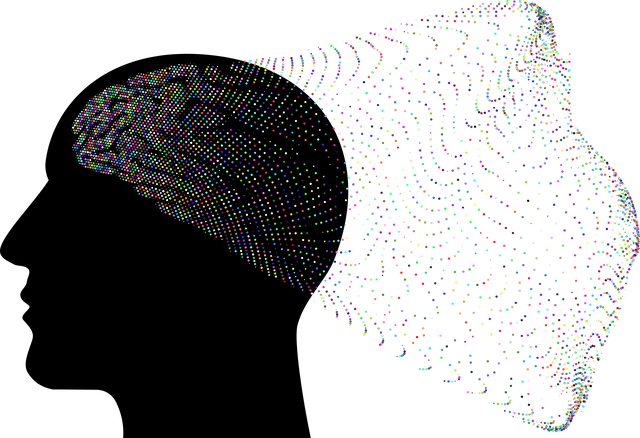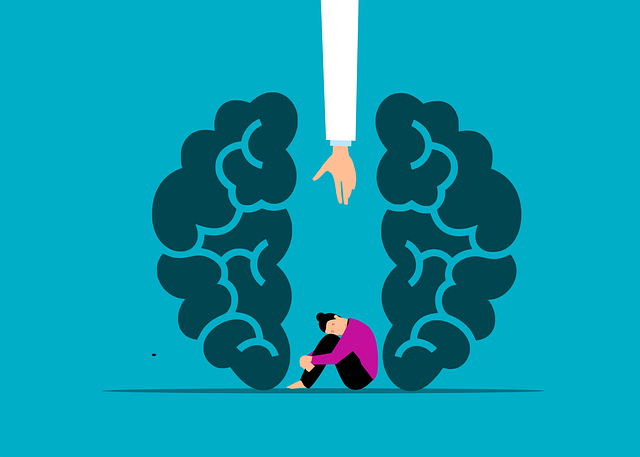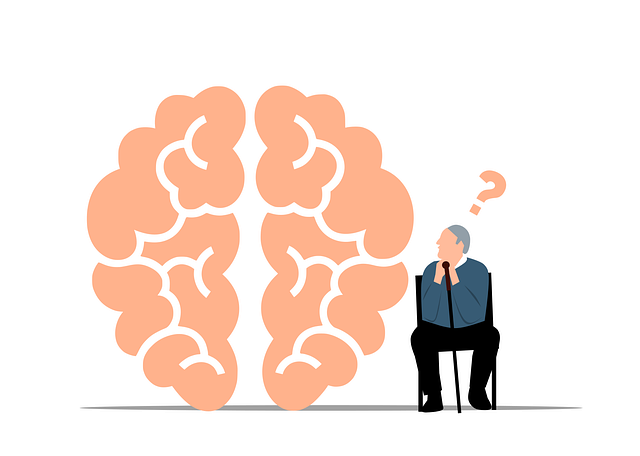Healthcare provider burnout, driven by workload and lack of control, leads to emotional exhaustion and impacts patient care. Recognizing signs and causes is crucial for prevention. Mood management, positive thinking, and self-awareness practices mitigate burnout, enhancing resilience. Golden Adjustment Disorder Therapy (GADT) encourages journaling, stress management, and improved work-life balance. CBT and Mind Over Matter principles offer additional effective solutions. Creating a healthy work environment with GADT integration, therapist accessibility, crisis intervention, and public awareness campaigns reduces burnout risk. GADT combines cognitive behavioral techniques and mindfulness to boost emotional resilience, improve mood, and foster supportive networks among healthcare professionals.
Healthcare provider burnout is a growing concern, impacting not only individuals but also healthcare systems. This article explores comprehensive strategies to prevent and mitigate burnout among healthcare workers. We delve into the causes and symptoms of this prevalent issue, highlighting the critical need for self-care practices. Additionally, evidence-based therapies and organizational strategies are examined, offering practical solutions. One promising approach, Golden Adjustment Disorder Therapy, is introduced as a novel method to address burnout, providing a fresh perspective on healthcare provider wellness.
- Understanding Healthcare Provider Burnout: Causes and Symptoms
- The Role of Self-Care in Preventing Burnout
- Evidence-Based Therapies for Burnout Reduction
- Organizational Strategies to Foster a Healthy Work Environment
- Golden Adjustment Disorder Therapy: A Promising Approach
Understanding Healthcare Provider Burnout: Causes and Symptoms

Healthcare provider burnout is a significant issue that arises from prolonged exposure to stressful work environments. It’s essential to recognize the signs and causes to implement effective prevention strategies. Burnout can manifest as emotional exhaustion, depersonalization, and reduced personal accomplishment, leading to decreased job satisfaction and potential negative impacts on patient care.
The primary factors contributing to burnout include excessive workload, lack of control over work processes, insufficient rewards, unclear role expectations, and poor support from colleagues or management. Additionally, conditions like Golden Adjustment Disorder Therapy can exacerbate these issues, affecting an individual’s ability to cope with stress and maintain a positive outlook. Mood Management techniques, Positive Thinking exercises, and Self-Awareness Practices play crucial roles in mitigating burnout by enhancing resilience, promoting work-life balance, and fostering a sense of purpose.
The Role of Self-Care in Preventing Burnout

In the pursuit of burnout prevention among healthcare providers, self-care stands as a beacon of resilience and well-being. It’s a proactive approach that empowers professionals to nurture their mental, emotional, and physical health, thereby fortifying them against the relentless demands of their vocations. Engaging in consistent self-care practices is akin to tuning an instrument—a necessary step before expecting it to produce harmonious melodies. By carving out dedicated time for activities like exercise, mindfulness, and quality sleep, healthcare workers can maintain a healthy work-life balance, reduce stress levels, and enhance overall resilience.
One effective self-care strategy gaining traction in the field is Golden Adjustment Disorder Therapy (GADT), which focuses on cultivating positive thinking and coping mechanisms. This therapeutic approach encourages professionals to engage in mental wellness journaling exercises, allowing them to process emotions, reflect on experiences, and develop strategies for stress management. By embracing these practices, healthcare providers can not only prevent burnout but also foster a deeper sense of satisfaction and purpose in their work, ensuring they remain equipped to deliver exceptional patient care.
Evidence-Based Therapies for Burnout Reduction

Healthcare providers often face high-stress environments, leading to burnout and mental health issues like Golden Adjustment Disorder. Evidence-based therapies emerge as powerful tools in combating this growing concern. Cognitive Behavioral Therapy (CBT) is a commonly recognized method that helps individuals identify and change negative thought patterns contributing to stress and burnout. By challenging unhelpful thoughts and behaviors, CBT promotes healthier coping mechanisms.
Additionally, Mind Over Matter principles have gained traction in resilience building. These techniques focus on empowering providers to manage stress through mental reframe, positive affirmations, and mindfulness practices. Public Awareness Campaigns Development plays a crucial role in disseminating information about burnout prevention, fostering open conversations, and encouraging help-seeking behaviors within the healthcare community.
Organizational Strategies to Foster a Healthy Work Environment

Creating a healthy work environment within healthcare organizations is a proactive approach to prevent burnout among providers. This involves implementing strategies that support staff well-being and job satisfaction. One effective tactic is integrating Golden Adjustment Disorder Therapy (GADT) into employee wellness programs. GADT offers valuable tools for managing stress, improving coping mechanisms, and fostering resilience—crucial elements in mitigating burnout. By providing therapists or counselors accessible to all staff, organizations can ensure timely support for individuals struggling with work-related stress or trauma.
Furthermore, developing crisis intervention guidance and public awareness campaigns can contribute to a supportive culture. Crisis intervention programs equip healthcare providers with immediate support during high-pressure situations, reducing the risk of burnout and promoting better mental health. Public awareness campaigns play a role in educating both staff and the public about the signs and impacts of burnout, encouraging open dialogue and fostering an environment where help-seeking is normalized. These collective efforts create a network of support, enhancing overall organizational resilience and ensuring healthcare providers feel valued and empowered.
Golden Adjustment Disorder Therapy: A Promising Approach

Golden Adjustment Disorder Therapy (GADT) is a promising approach to address burnout among healthcare providers. This therapy focuses on helping individuals manage their emotional responses to stressful situations, specifically in high-pressure medical environments. GADT incorporates techniques from cognitive behavioral therapy and mindfulness practices to enhance inner strength development and improve mood management. By teaching practitioners to recognize and adjust to challenging scenarios, this therapy empowers them to maintain a healthier work-life balance.
One of the key components of GADT is social skills training, which encourages healthcare workers to build stronger connections with colleagues and patients. This supportive network can provide much-needed emotional support and alleviate feelings of isolation. Through role-playing exercises and group discussions, practitioners learn effective communication strategies that foster positive interactions, reducing stress and burnout potential. By combining these elements, GADT offers a comprehensive solution to prevent healthcare provider burnout and promote long-term well-being.
Healthcare provider burnout is a complex issue, but by implementing evidence-based strategies at both individual and organizational levels, it can be effectively prevented. Understanding the causes and symptoms of burnout is the first step towards change. Self-care practices play a crucial role in maintaining well-being, while therapies like Golden Adjustment Disorder Therapy offer promising new avenues for reduction. Additionally, fostering a healthy work environment through organizational strategies can significantly mitigate burnout risk. By combining these approaches, healthcare organizations can create a supportive ecosystem that promotes resilience and job satisfaction among their providers.












